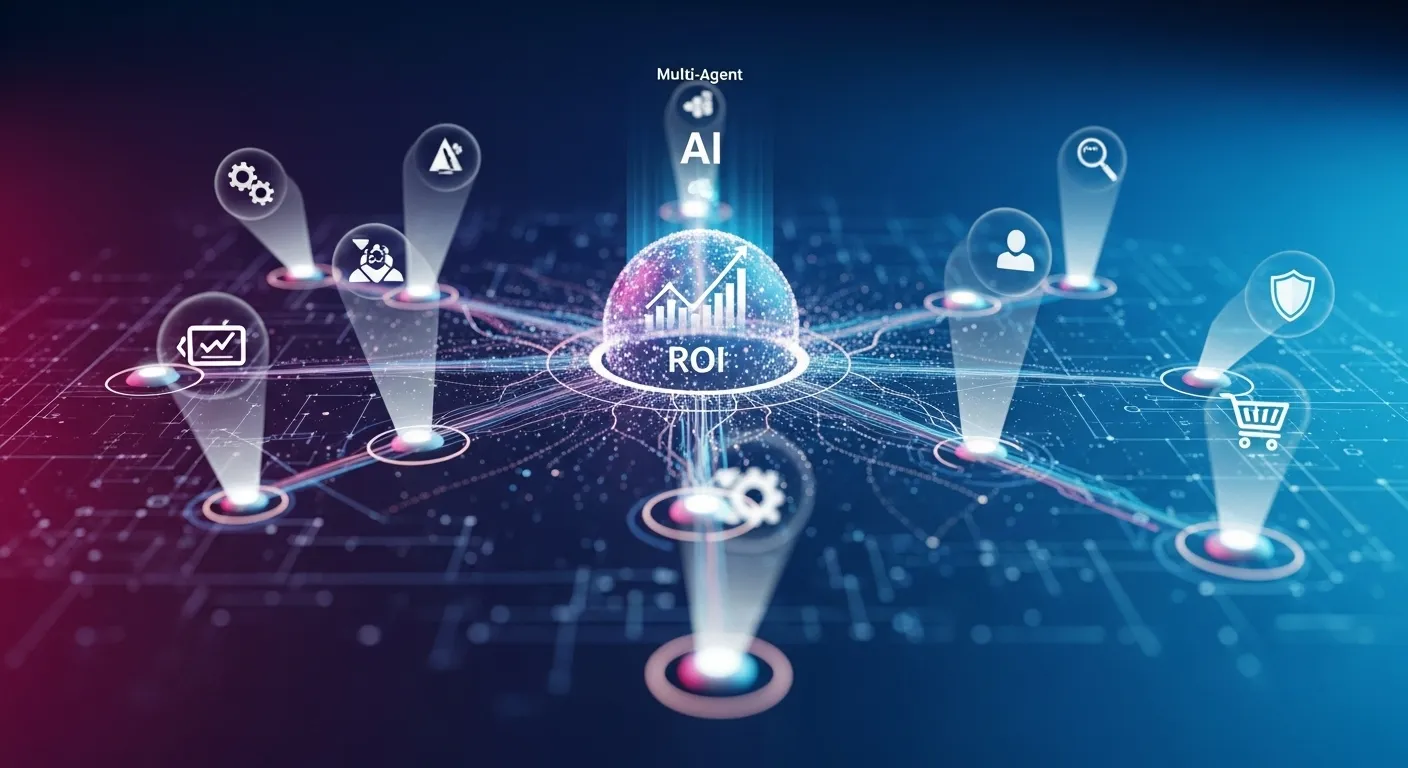Imagine an AI that can write your report, research the data, design the slides, and even schedule the presentation—all without you lifting a finger. This isn’t a single super-intelligence; it’s a team of specialized AI agents working in concert. Welcome to the world of multi-agent teams, where collaboration isn’t just for humans anymore.
What Are Multi-Agent Teams?
Think of multi-agent teams as a specialized task force where each AI agent has a specific role—like having a researcher, writer, analyst, and project manager all working together autonomously. Instead of one AI trying to do everything moderately well, you get a team of experts collaborating to solve complex problems.
These teams communicate, delegate tasks, and even debate solutions before delivering a final result. It’s the difference between asking one overworked employee to handle an entire project versus assembling a dream team where everyone plays to their strengths.
How Multi-Agent Teams Work
The magic happens through a structured collaboration framework. Here’s the typical workflow:
- Task Decomposition: A “manager” agent breaks down your complex request into smaller, manageable tasks
- Role Assignment: Specialized agents (researcher, coder, designer, etc.) are assigned based on their expertise
- Parallel Execution: Agents work simultaneously on their respective tasks
- Collaboration & Review: Agents share results, provide feedback, and refine each other’s work
- Final Integration: A “synthesizer” agent combines everything into a cohesive final output
Benefits & Use Cases
- Complex Problem Solving: Tackle projects that require multiple domains of expertise simultaneously
- Faster Execution: Parallel processing means tasks that would take hours get completed in minutes
- Higher Quality Outputs: Built-in peer review and specialization leads to better results
- Scalability: Easily add or remove agents as project requirements change
Real-World Examples
Content Creation Team: Researcher gathers data, Writer creates the draft, Editor refines it, Designer creates visuals, and Publisher formats for different platforms.
Software Development: Architect designs the system, Coder implements features, Tester finds bugs, and DevOps handles deployment.
Business Intelligence: Data Collector gathers metrics, Analyst identifies trends, Visualizer creates dashboards, and Strategist recommends actions.
Essential Tools for 2025
The multi-agent landscape has exploded with sophisticated platforms:
- CrewAI: Open-source framework for role-playing agent teams with built-in collaboration tools
- AutoGen: Microsoft’s framework for creating conversational multi-agent systems
- LangGraph: Build stateful, multi-actor applications with complex workflows
- SuperAGI: Cloud platform for deploying and managing agent teams at scale
- Smol Agents: Lightweight framework for rapid prototyping of multi-agent systems
The Real ROI in 2025
The return on investment isn’t just theoretical—early adopters are seeing tangible benefits:
- Time Savings: Companies report 60-80% reduction in project completion times
- Cost Reduction: Automated teams can replace entire workflow segments, reducing operational costs by 30-50%
- Quality Improvement: Multi-layer review processes catch errors humans might miss
- Scalability: Handle 5x the workload without proportional cost increases
One marketing agency reported completing client campaigns in 2 days instead of 2 weeks, while a software company cut development cycles by 40% using multi-agent code review teams.
Building Your First Team: Step-by-Step
- Define Your Objective: Start with one clear, complex task that requires multiple skills
- Choose Your Framework: Select a tool like CrewAI or AutoGen based on your technical comfort level
- Design Agent Roles: Break down the task and assign specific responsibilities to different agent types
- Set Up Communication: Define how agents will share information and coordinate
- Test with Simple Tasks: Start small to identify workflow issues before scaling up
- Iterate and Refine: Continuously improve your team structure based on performance
FAQs
Are multi-agent teams replacing human workers?
Not exactly—they’re augmenting human capabilities. Think of them as super-powered assistants that handle routine complex work, freeing humans for strategic thinking and creative tasks that AI still struggles with.
How much technical expertise do I need?
It depends on the tool. Platforms like CrewAI have relatively gentle learning curves, while frameworks like AutoGen require more programming knowledge. The no-code multi-agent space is growing rapidly.
What are the main challenges?
Orchestration complexity, cost management (multiple agents mean multiple API calls), and ensuring consistent quality across different agent outputs. These are becoming easier to manage as the technology matures.
Can small businesses benefit from multi-agent teams?
Absolutely. Many multi-agent frameworks are open-source and cloud-based, making them accessible without large upfront investments. The efficiency gains can be particularly valuable for resource-constrained small teams.
Bottom Line
Multi-agent teams represent the next evolution in AI—moving from solitary tools to collaborative systems that mirror how humans actually solve complex problems. Whether you’re building content, software, or business strategies, these AI teams can deliver results that single agents simply can’t match. The question isn’t whether you’ll use multi-agent systems, but when you’ll start.
Ready to build your first AI dream team? Share your experience or questions in the comments below!

